In this blog, we will be discussing about, ‘Elements of Design’ or ‘Building Blocks of Graphic Design‘. In our, ‘Basics of Design‘ blog, we discussed how content is affect by use and organization of Elements of Design. My name is Lalit M S Adhikari and we are at LTY. Let’s get started!
Introduction
The Elements of Design include Point, Line, Shape, Color, Space, Plane, Texture and Volume. As a designer, we have to use Elements of Design along with Principles of Design to create designs which are aesthetically pleasing and enhances User Experience.
So, if you are going to create a design for a client. Suppose your client has an Architecture Firm. Then first you should research about ‘Architecture’ field and everything in it. But only studying about client’s field and creating a theme or idea is not enough. To be able to implement and execute your idea or theme, you should have a sound understanding of Elements of Design.
If you Google, the term Elements of Design. The result shows Elements of Design as well as Principles of Design mixed together. Even most of results will consider these two topics as similar or single topic which is not the case. They are not at all same or similar.
The eight Elements of Design, as mentioned above are Point, Line, Shape, Color, Space, Plane, Texture and Volume. How we arrange or organize them in a design is decided by Principles of Design. Hopefully, that may have clarified you about the difference between Elements of Design and Principles of Design.
In this blog, we are only going to focus on ‘Elements of Design’. The next blog, will focus on ‘Principles of Design’.
Elements of Design
Elements of design can be defined as the buildings block of design or components of designing. We will be discussing all the Elements of design below one by one.
Point
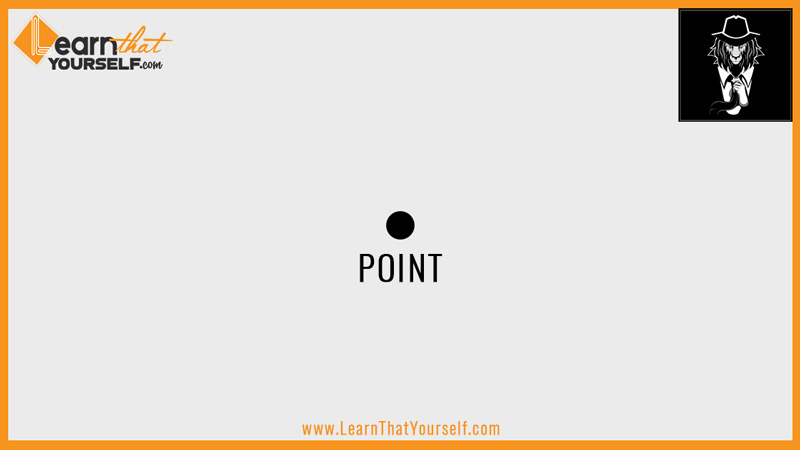
A point is merely a dot or represented by dot. It is the most basic Element of Design.
It conveys a sense of assurance as it has a fixed position. When used in combinations, it can represent more complicated ideas and there repetition may create a sense of movement.
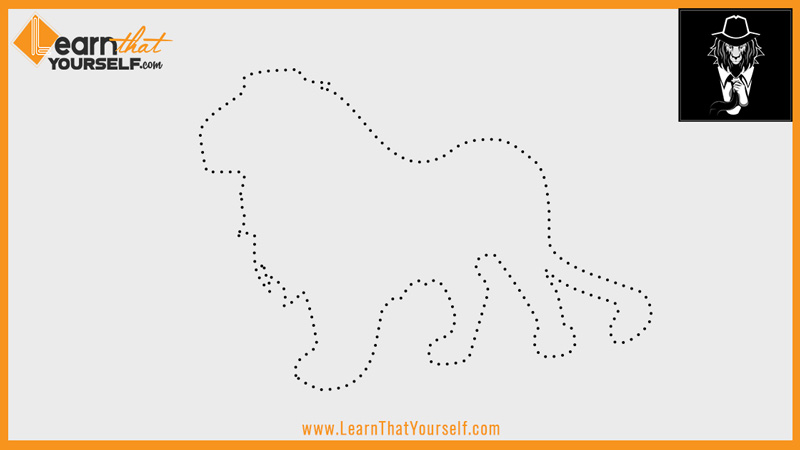
Line
In drawing or traditional form of art, line is a stroke of the pencil or brush but in Digital form, line is connection between any two points.
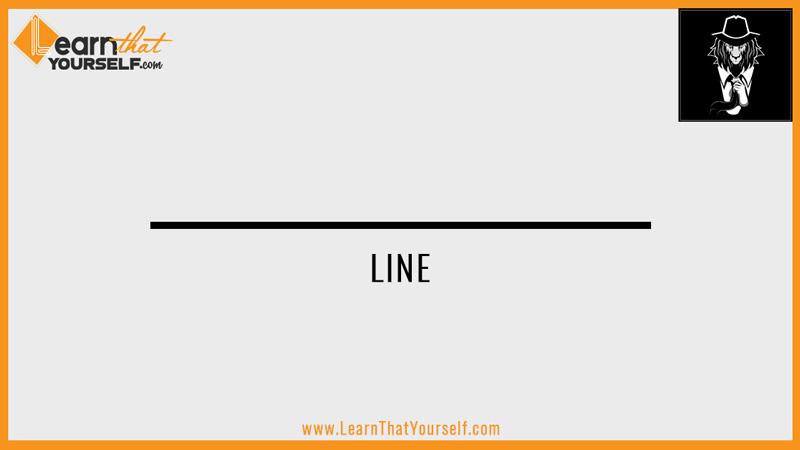
The line is a dot out for a walk.
Paul Klee
Lines can be:
- thick or thin
- long or short
- horizontal, vertical or diagonal
- solid, dotted or dashed
- curved, straight or combination of both
- literal or implied (For example: Draw dots close together and your mind will fill in the line between them.)
In each of the different way, we draw a line, it gets unique characteristics. Lines also help in creating shapes, forms, patterns, perspective and a sense of continuance.
Types of Lines:
In general, there are 4 types of lines, defined by their use:
- Contour Lines are used to define edges. They create boundaries around or inside an object. Most lines, we encounter are Contour Lines.
- Dividing Lines are used to divide space. The lines between columns of text are example of Dividing Lines.
- Decoration Lines are used to embellish other object. Embellish means to make something more beautiful or attractive by adding something to it (as defined by Cambridge Dictionary). The technique of cross-hatching in sketching is also an example of Decoration lines as they are meant to add shading and form to an object.
- Gesture Lines or Motion Lines are quick and rough continuous lines used to represent form and movement. They are used for depicting shape and motion of an object or human.
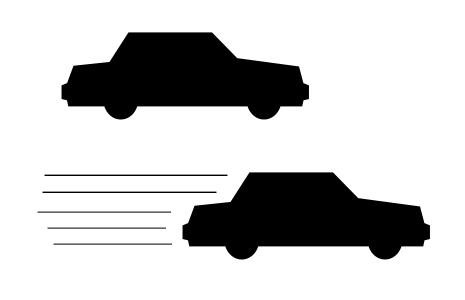
Lines are also useful in:
- separating space
- drawing audience’s attention to a specific location
Meaning of Lines:
Lines also have psychological impact with their use as an expression. They convey an emotion (either attitude or action) with which the audience can associate itself.
- Thin Lines are fragile in nature. Fragile means easily breakable (Cambridge Dictionary). They represent frailty and elegance. Frailty means the condition of being weak and delicate by Oxford Languages.
- Thick Lines appear strong and difficult to break. They show strength and give emphasis to nearby elements. They are bold and used to make a statement.
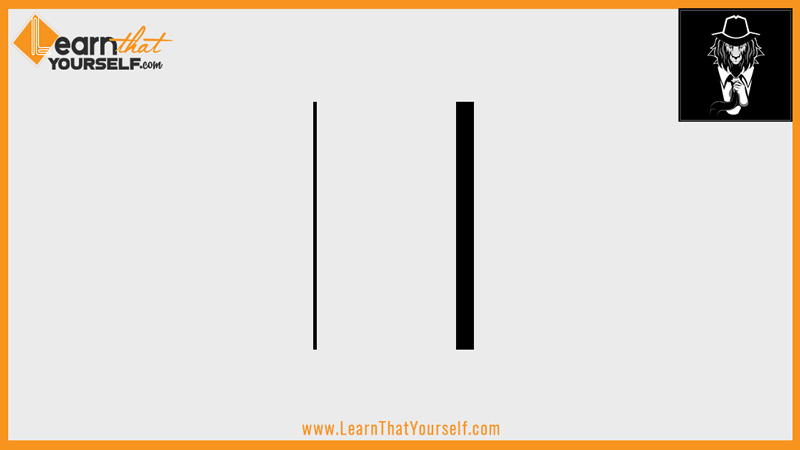
- Horizontal Lines have a psychological effect of calmness, relaxed comfort and quietness because they look like as they are lying down or at rest or asleep. They can’t fall over. They accentuate width. They are stable and secure. They also represent an absence of conflict. They are associated with Earth bound themes and ideas.
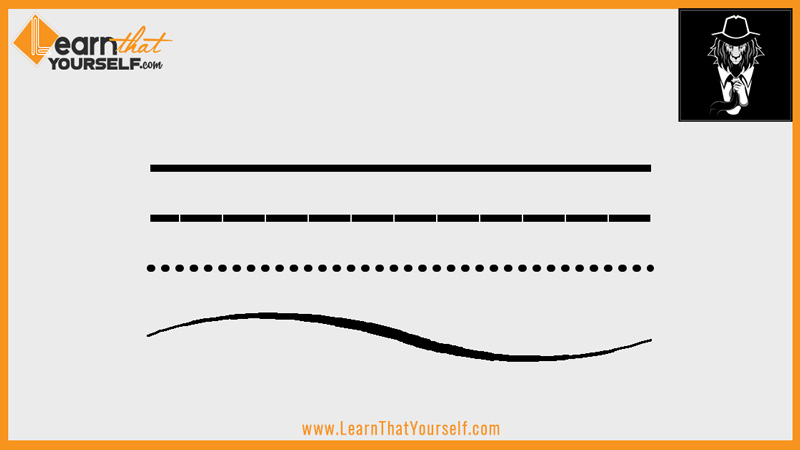
- Vertical Lines have a psychological effect of power and strength. They are strong and rigid suggesting stability when thicker. They accentuate height and show lack of movement. They are often connected to religious feelings and may give an impression of dignity.
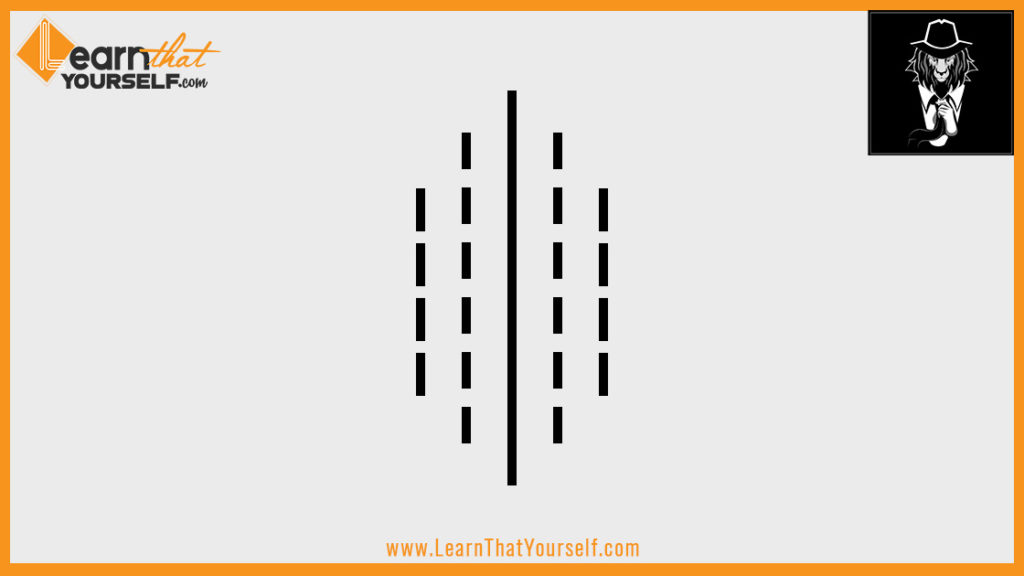
- Diagonal lines have a sense of movement associated with them as they are unbalanced in nature. They represent restlessness and uncontrolled energy. They may appear to either rise or fall and apparently creating tension or excitement. They are more dramatic than horizontal or vertical lines.
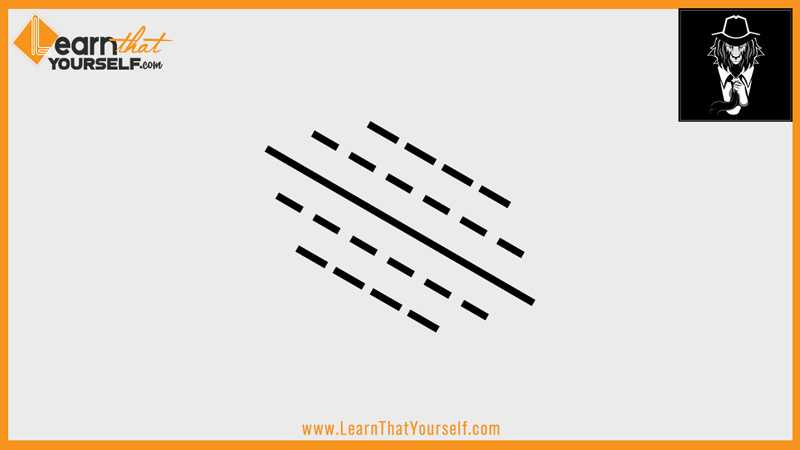
- Curved Lines appear to be softer than the straight lines. As they sweep and turn gracefully between end points, they are less definite and predictable than straight lines. They express fluid movement or nature. They can represent calmness or dynamic nature depending on their curve. The lesser the curve, the calmer the feeling.
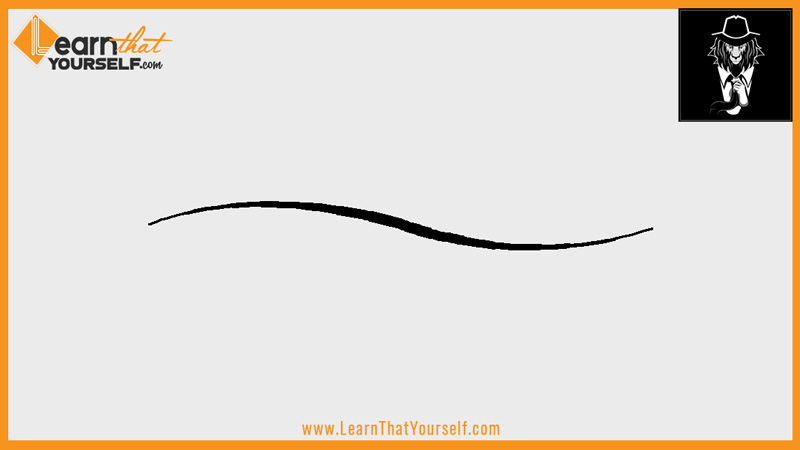
- Zigzag Lines are combinations of diagonal lines which are connected by points. They convey dynamic and high energy characteristics of diagonal lines creating excitement and intense movement. Also representing confusion and nervousness because of quick and frequent change in direction.
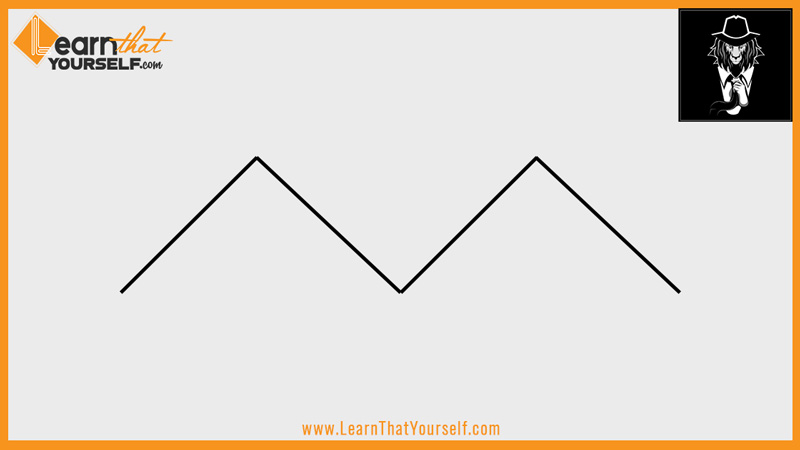
- Artificial Lines are long, perfectly even and hence feels artificial.
- Natural Lines are not perfectly even and straight. Hence adding little variation in a line make it feel more natural.
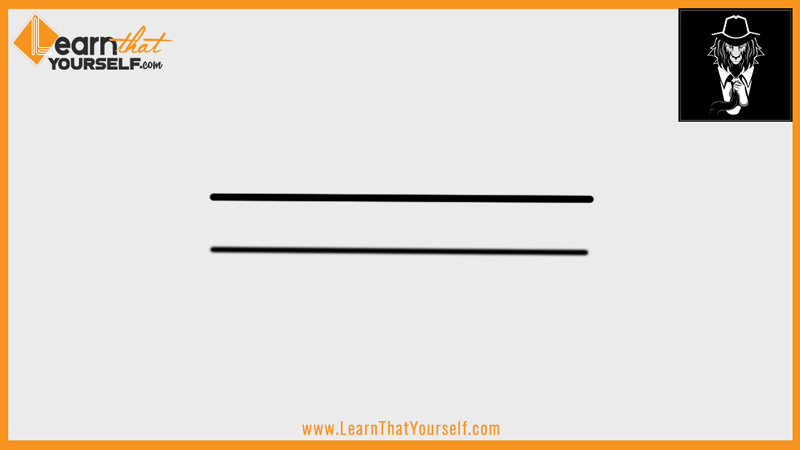
- Dashed and Dotted Lines are suggested lines but not directly expressed lines. They give a feeling of incomplete and allow objects or elements to pass through them.
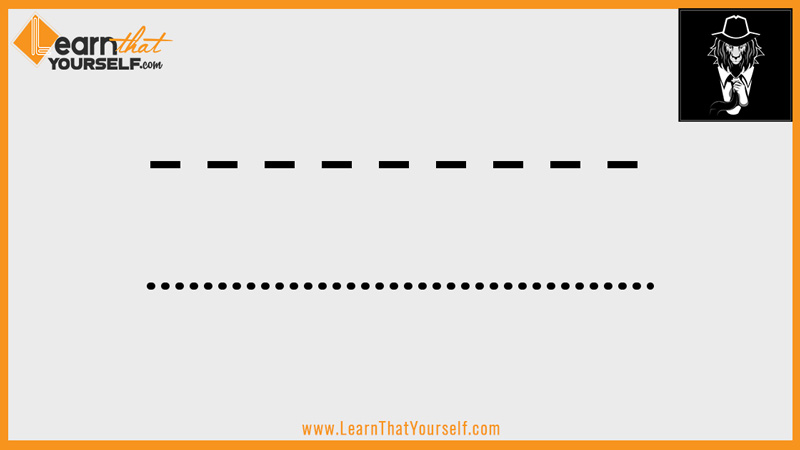
- Parallel Lines with uniform width and space between them create a static and orderly effect whether they are horizontal or vertical or diagonal. Even in Curved Lines, this will create order which will be dynamic than straight lines creating a sense of movement.
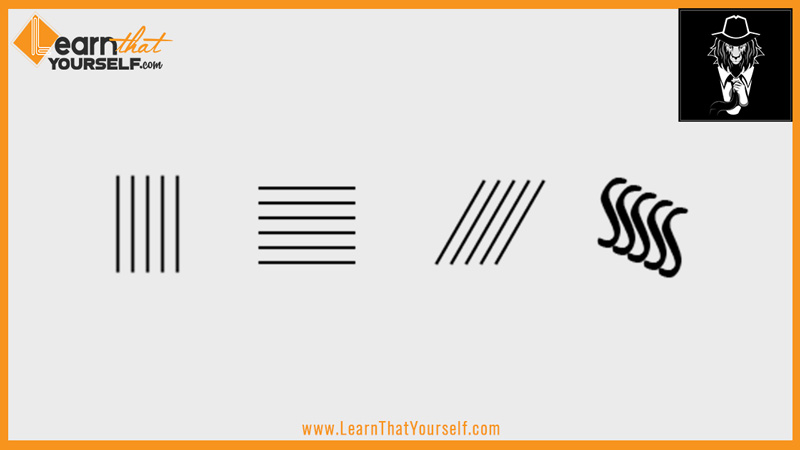
- Variation in space between lines of equal thickness creates motion. When space between lines of same thickness is random, it creates a dynamic effect with little order in it. If both space and thickness of lines vary, then chaotic and disorderly effect is created.
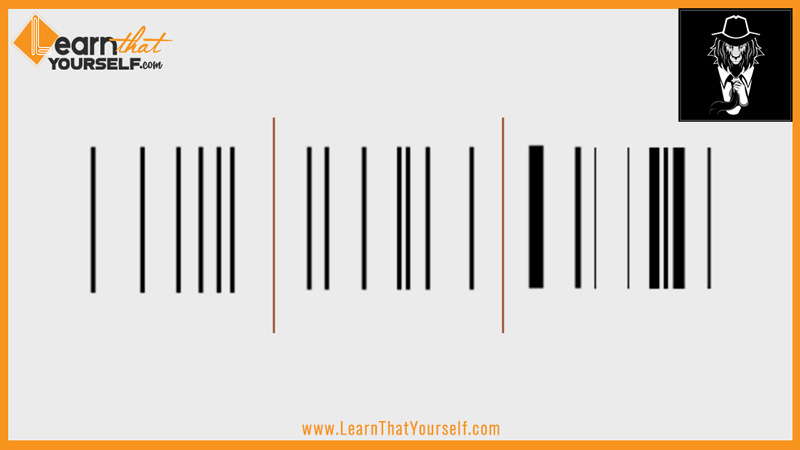
Other Resources on web to read:
Shape
Shape are created by closed contours. The term Contours means, “An outline representing or bounding the shape or form of something” as defined by Oxford Languages. So, we can say Shapes are two-dimensional areas with recognizable boundaries which could be open, closed, angular, rounded, big, small, free-form or ordered.
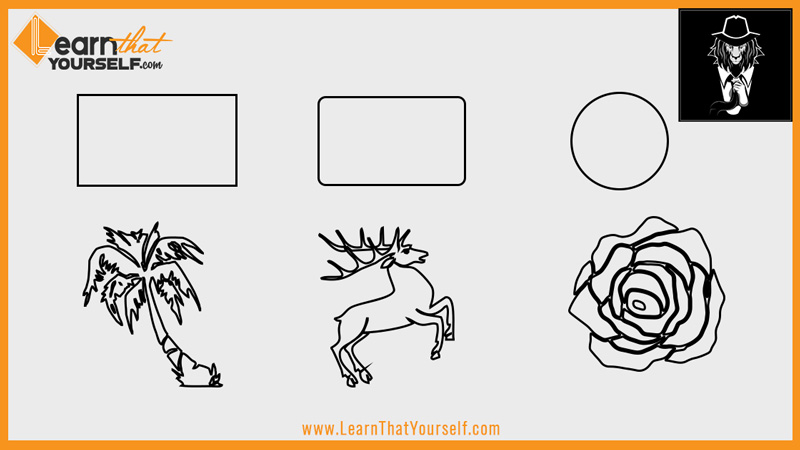
I found I could say things with color and shapes that I couldn’t say any other way – I had no words for.
Georgia O’Keeffe
Shapes can be defined by their colors or by combination of lines creating their edges. Simple shapes can be combined together to create complex shapes and complex shapes could be simplified to form abstract shapes.
Shapes can be used for:
- Organizing information through connections & separations
- Symbolizing different themes and ideas
- Creating movement, texture & depth
- Conveying mood, emotion & feelings
- Emphasizing & creating entry points & areas of interest
- Leading the eyes from one design element to next
Type of shapes:
- Geometric Shapes
- Organic Shapes
- Abstract Shapes
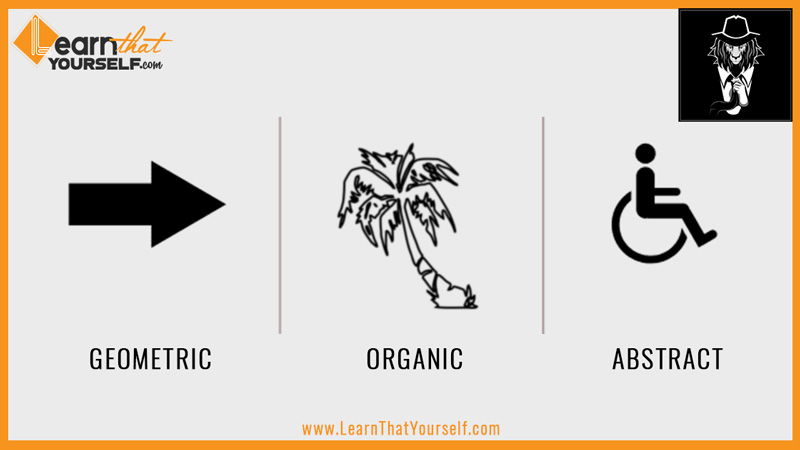
Geometric Shapes
Geometric shapes are mathematical shapes constructed in regular and structured manner. These are the shapes, what most people think of as shapes.
Circles, Rectangles, Rounded Rectangles, Squares, Triangles, Stars, Diamonds are made up of regular patterns that are easy to recognize. Their regularity suggests organization, structure and efficiency. Geometric shapes tend to be symmetrical, hence suggesting order.
They work as building blocks for Graphic Designing.
Examples: Rectangle, Triangle and Circle etc.
Organic Shapes
Organic shapes are the shapes which exist in nature or created artificially. Hence there construction is irregular, asymmetrical and even random. They have more curves and unevenness in structure. They tend to be pleasing and comforting. They are typically representative of shapes found in nature such as a leaves, rocks and clouds.
They are free form, asymmetrical and convey feelings of spontaneity. They add interest and reinforce themes.
Examples: Stones, trees and leaves etc.
Abstract Shapes
Abstract shapes add a concise identity to a design .i.e., it may include symbols, icons, stylized illustrations etc. These shapes have a recognizable form but are not real. They are stylized or simplified versions of organic shapes.
For Example: A stick figure is an abstract shape depicting a person.
Typographic glyphs are abstract shapes to represent letters. Icons are abstract shapes to represent ideas and concepts. Some abstract shapes have near universal recognition. Think of some of the icons you see in the apps and websites you use daily.
Meaning of Shapes:
Just like Lines, as we discussed above, Shapes too have their own meaning. As it is clear that there are endless variety of shapes and combination of shapes, each communicating their own meaning and message.
We will be confining ourselves to the discussion of some basic Geometric Shapes.
Circle:
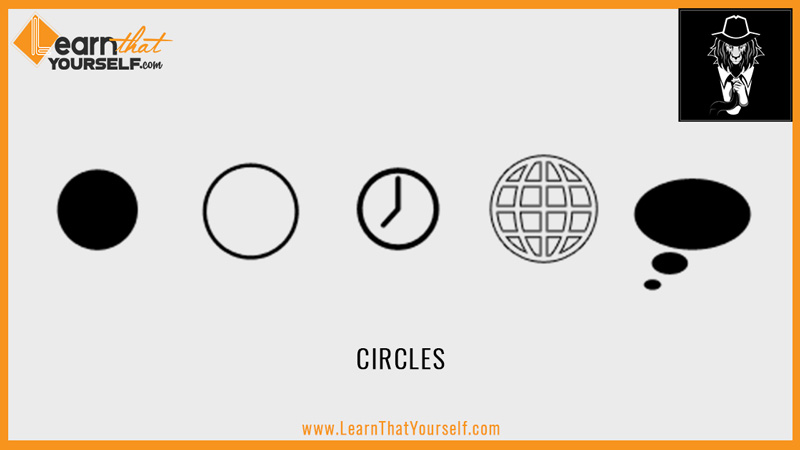
- They have no beginning or end.
- They represent eternal whole.
- They suggest familiarity.
- They suggest well-roundedness and completeness (infinite, unity and harmony).
- They have free movement.
- They are graceful and their curves can be seen as feminine.
- They are warm and comforting.
- They give a sense of sensuality and love.
- Their movement suggest energy and power.
- They protect, endure and restrict.
- They suggests community, integrity and perfection.
- As they are less common in design they work well to attract attention, emphasize and set things apart.
Rectangle & Square:
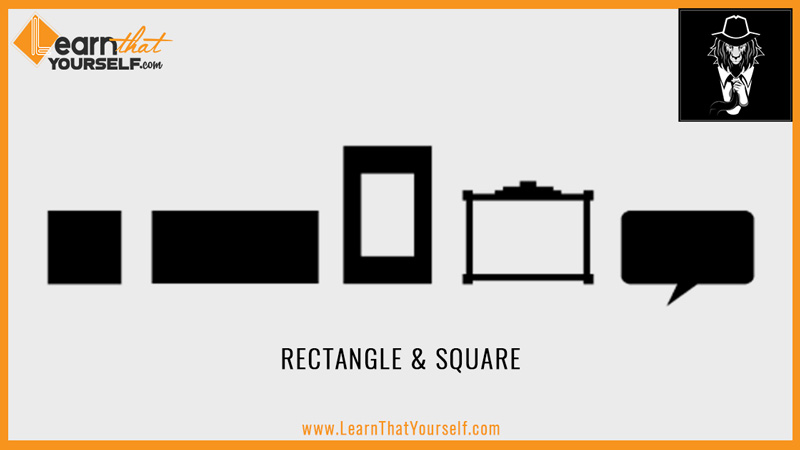
- They are stable.
- They are familiar, trusted shapes and suggest honesty.
- They represents order, mathematics, rationality and formality.
- They are seen as earthbound.
- Rectangles are the most common Geometric Shape we encounter.
- They suggest conformity, peacefulness, solidity, security and equality.
- Their familiarity & stability along with their commonness can seem boring. They are generally not attention grabbers but tilting them may add an unexpected twist.
- In Buddhist symbolism a square (earthbound) is placed inside a circle (eternal whole) representing the relationship between the human and the divine.
Triangle
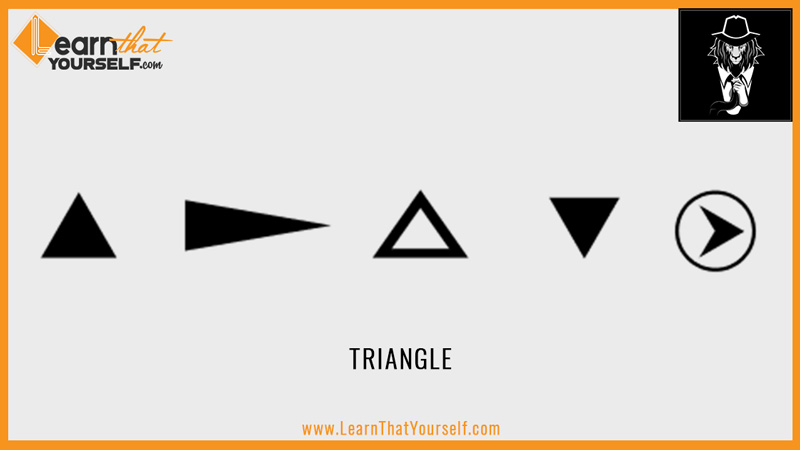
- They can be stable when sitting on their base.
- They represent dynamic tension, action & aggression.
- They have energy, power.
- Their stable or unstable dynamic suggests conflict or steady strength.
- They are balanced & can be a symbol for law, science & religion.
- They can direct movement based on which direction they point.
- They can suggest self-discovery and revelation.
- Their strength suggests masculinity.
- As a logo, they are better suited for high tech companies.
- They can be used to convey progression, direction & purpose.
Spiral:
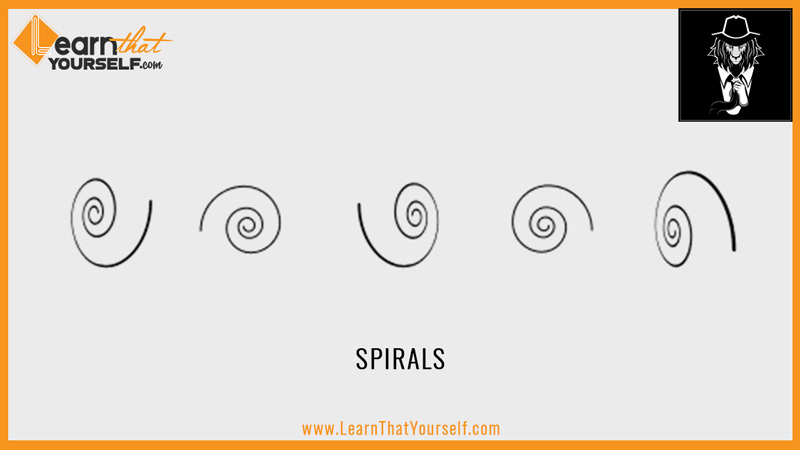
- They are expressions of creativity.
- As they are often found in natural growth pattern of many organisms. Hence they suggest the process of growth & evolution.
- They convey the ideas of fertility, birth, death, expansion and transformation.
- They are seen as cycles of time, life & seasons. Hence they are common shape in religious & mystical symbolism.
- As they move in either direction, they represent returning to the same point on life’s journey with new levels of understanding.
- They represents trust during change, release of energy & maintains flexibility through transformation.
- Clockwise spiral represents projection of an intention.
- Counter clockwise spirals represents the fulfillment of an intention.
- Double spirals can be used to symbolize opposing forces.
Cross
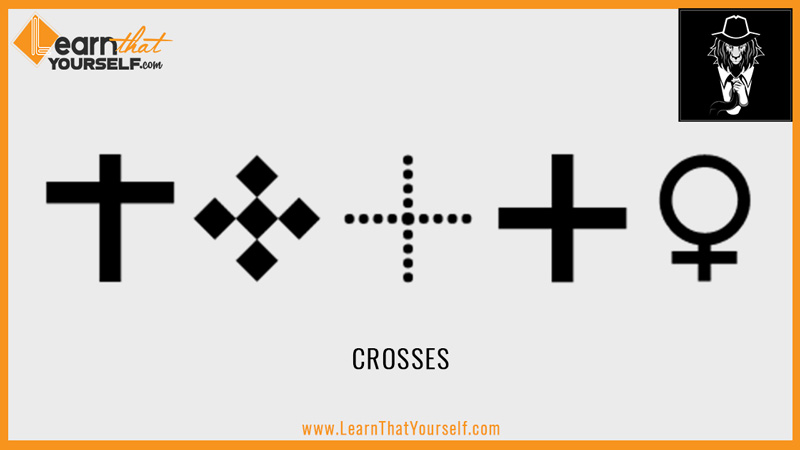
- They symbolize spirituality and healing.
- They are seen as the meeting place of divine energies.
- The four points of a cross represents self, nature, wisdom & higher power.
- It suggests transition, balance, faith, unity, temperance, hope & life.
- They represent relationships & a need to connect to something.
Curved Shapes
They offer rhythm, movement, happiness, pleasure & generosity. They are seen more as feminine.
Sharp Shapes
They offer energy, violence & anger. They are lively, youthful and hence seen as more masculine.
Color
Color is the most obvious Element of Design. It can stand alone or be applied to other Elements of Design. It creates a mood within the design and tells the story about the Brand.
Colors have psychological and emotional effects, attract attention etc. Every color stands for something different and their combinations can alter the meaning further.
Color is the most relative medium in Art.
Josef Albers
Colors are useful for
- highlighting elements
- creating visual hierarchy
- creating certain mood
- harmonize or creating equilibrium in layout
Colors’ Psychological & Emotional effects
| Color | Elements |
|---|---|
| Red | Energy, Passion, Power & Excitement |
| Orange | Happiness, Confidence, Creativity & Adventure |
| Yellow | Wisdom, Playfulness, Satisfaction & Optimism |
| Green | Health, Regeneration, Contentment & Harmony |
| Blue | Honesty, Integrity & Trustworthiness |
| Violet | Regale, Mystic, Beauty & Inspiration |
| Brown | Easiness & Passivity |
| Black | Finality & Transitional color |
We have discussed about colors in our Color Theory Blog post.
Space
Space is defined as the area between or around the elements. It provides rest or breathing space to the audience. It could be either positive or negative. Positive space is the actual shape whereas, negative space is the space around the shape.
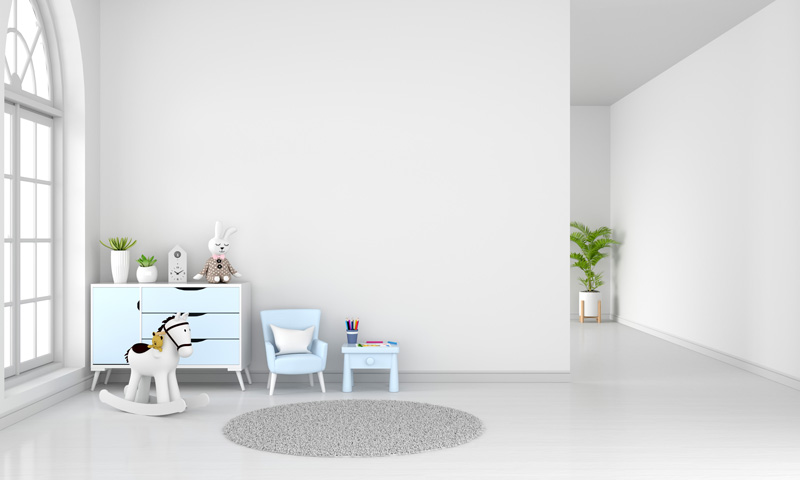
Less is more.
Ludwig Mies van der Rohe
What is White space?
White space is the space between the design elements. On a board level, it’s the space around your design and the empty space between elements. On a micro level, it’s the space between two lines of text or space between an image and it’s caption.
White space is also known as Negative space which has became quite a popular concept in recent times. It is also referred as ‘Breathing Space‘. As it provides a break from too information feeding to relax and process the input.
Some inexperienced designer or students may find an urge to fill up the whole design with the information i.e., via text or by other Elements of Design. Hence, underestimating the importance and value of White space.
What’s left out is often just as important as than what’s left in.
Why use White space?
- Even our Elements of Design also need some breathing space. Hence making it easier for the audience to absorb the content.
- It helps create a design flow and achieve balance in design.
- It could also highlights specific content to create visual hierarchy.
- It make elements of a design to be recognized easily even typography.
- A good use of white space will lead to cleaner and more professional design.
- It can also add elegance and sophistication to design.
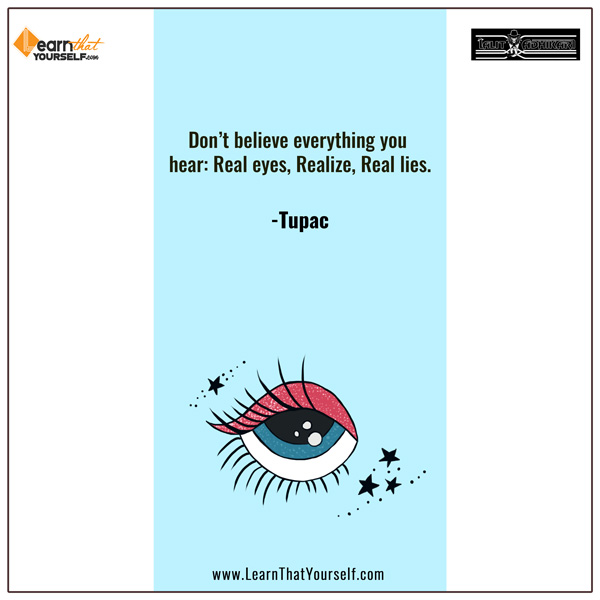
Plane
Plan are Two dimension flat surfaces with Width and Length or height but no depth.
They cover an area in any given direction.
They are commonly and prominently seen in works of traditional painters and architects.
Texture
Texture in simple words means look and feel of a plane or surface. It’s obvious to use texture when the piece isn’t going to be touched. As a Graphic or Web Designer, you have to rely on the texture to create impression on screen.
It is used to add the feeling of a surface and create design in harmony or in visual equilibrium with our content.
Volume
Volume is defined as the amount of space that a substance or object occupies or that is enclosed within a container by Oxford Languages.
Three-dimensional elements have volume and Two-dimensional elements have shape and form.
For example: A painting has shape and forms but a statue has volume and mass.
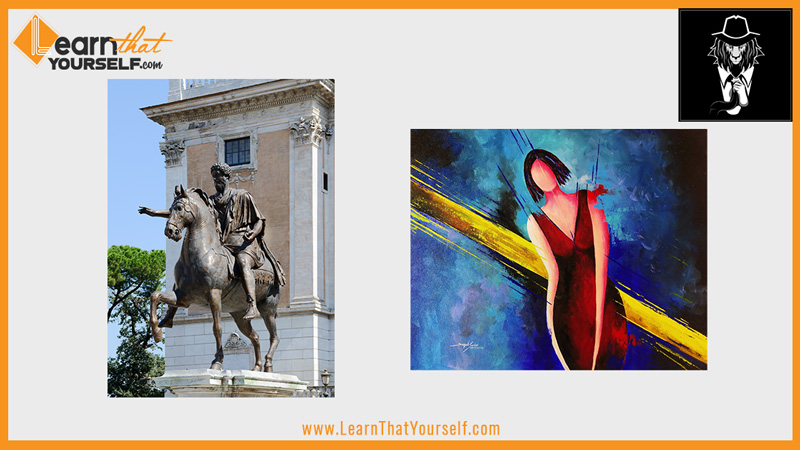

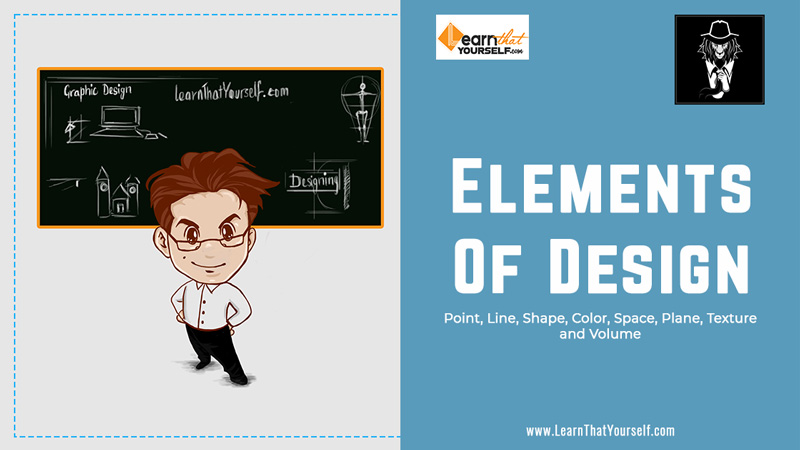
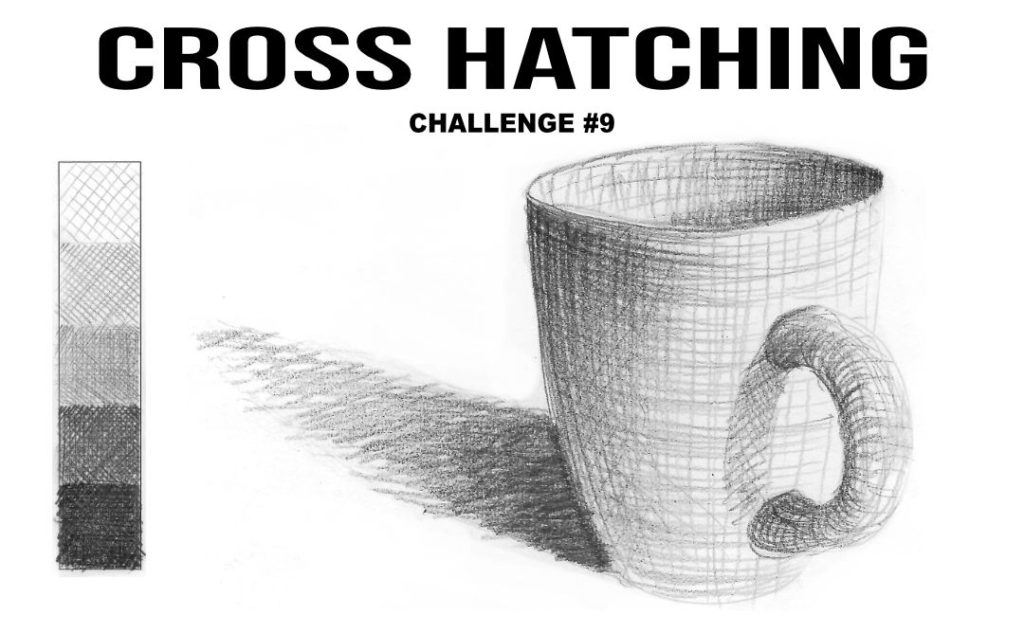
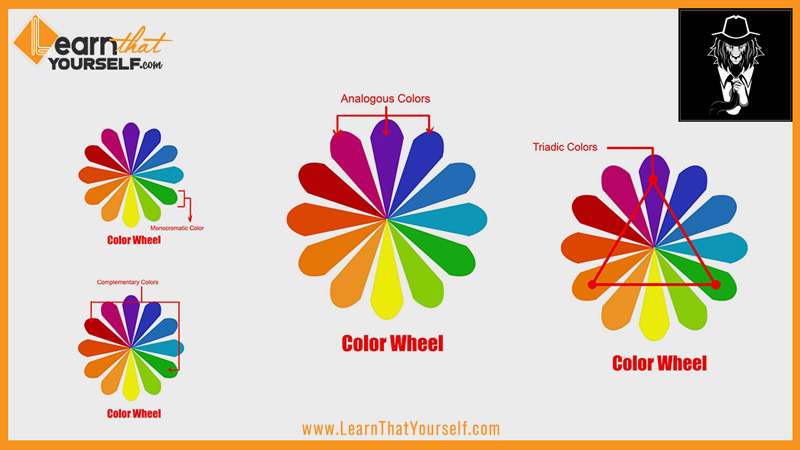

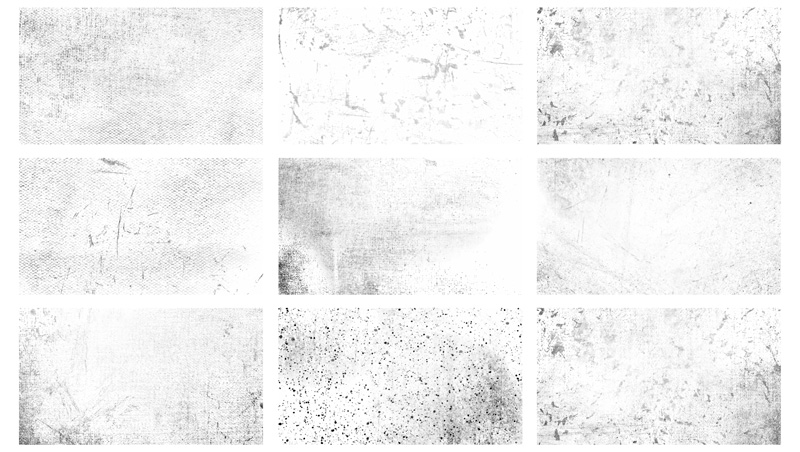
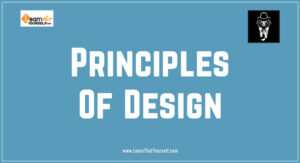
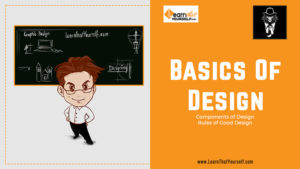

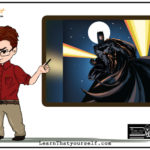

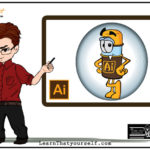
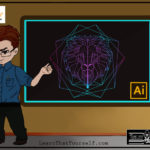
no one give this type of info ….salute
Thankyou sir for post this knowledge & Info
your faithful student
Thank you for the good writeup. It is so much detailed and included everything about Elements of design. And yes, people usually mix elements of design and principles of design.
It’s hard to find such good information on web. Thank you for sharing it!
Thank you, it helped a lot in my university assignment.